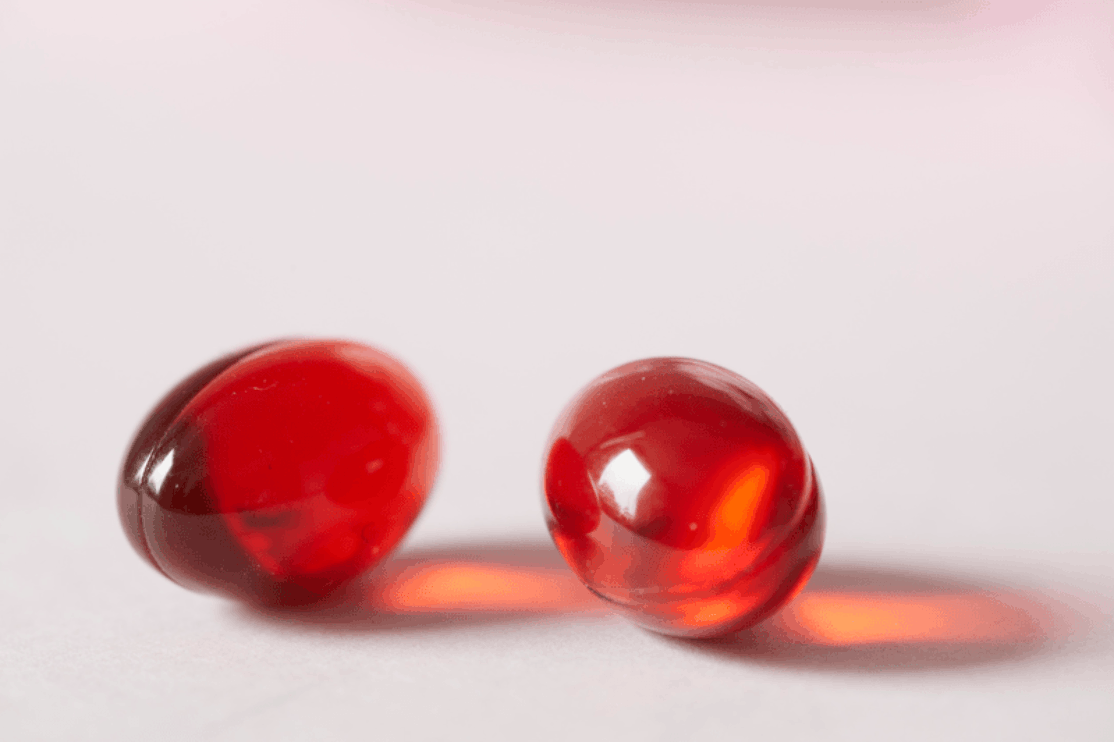
There are three primary types of Omega-3s that create a balanced, healthy diet: EPA, DHA, and ALA. There are a lot of questions surrounding these nutrients. Many people wonder if DHA is the same as Omega-3s. Or if you can get a proper amount of Omega-3s from ALA. These questions are important in understanding how our bodies break down and utilize Omega-3s.
What are Omega-3s?
Omega-3s are a type of fatty acid. Fatty acids play an essential role in your health and have plenty of health benefits, from healthy eyes to improved cardiovascular health. But here’s the catch - the only way to get these healthy fats is through your diet, meaning your body can’t produce them on its own.
There are three primary types of Omega-3s:
- EPA or eicosapentaenoic acid
- DHA or docosahexaenoic acid
- ALA or alpha-linolenic acid
Most people refer to the primary Omega-3s by their acronyms because the scientific names are quite a mouthful!
Fatty fish like salmon is the best source of Omega-3s. If you’re like most and don’t naturally incorporate seafood into your diet, then you might want to consider a natural supplement like krill oil to add these essential nutrients into your diet.
A Primary Omega-3: EPA
EPA is most commonly found in fatty cold-water fish. It can only really be obtained by eating fish or taking a non-plant-based Omega-3 supplement. The primary health benefit of EPA revolves around your cardiovascular system.
Classified as a polyunsaturated fatty acid, it acts as a precursor to important fats called prostaglandins. Essentially, EPA helps prostaglandins regulate inflammation, blood flow, the formation of blood clots, and more.
Overall, research suggests that eating foods high in EPA can support normal blood pressure and normal triglycerides in your bloodstream. Triglycerides are a type of fat that is found in your blood. When you consume extra calories, your body turns them into triglycerides, which can cause build-up and hardening of your arteries.
Other potential health benefits of EPA include:
- Reducing symptoms of depression
- Easing symptoms of menopause
- Promoting joint comfort and function
What Foods Have EPA?
EPA primarily comes from cold water seafood. Foods that are considered high in EPA include:
- Salmon
- Halibut
- Herring
- Oysters
- Rockfish
- Black cod
- Albacore tuna
- Herring
- Mackerel
- Anchovies
- Arctic Char
- Trout
- Sardines
In terms of supplements, krill oil and fish oil are good sources of EPA Omega-3s.
Is DHA The Same as Omega-3s?
The answer is yes and no. DHA is a type of Omega-3, so technically it is an Omega-3; however, there are three primary types of Omega-3s. So, although DHA is important to your health, it doesn’t tell the whole story about Omega-3s.
DHA, like EPA, is primarily found in coldwater fish. Like EPA, your body can’t produce DHA on its own. However, if you consume EPA, a small amount of it does convert into DHA.
Many of the primary health benefits of DHA are the same as EPA, since typically both get consumed together and most studies focus on both EPA and DHA as a pair.
One unique aspect of DHA is its role in increasing “good” HDL cholesterol, even by up to 7.6%.
DHA has also been shown to reduce the risk of pre-term birth (birth prior to 34 weeks) in pregnant people. This is why a lot of prenatal vitamins contain DHA and some EPA. DHA is an important nutrient to add to the diet of expecting parents.
Another primary benefit that is DHA-specific is promoting eye health. DHA does a lot to help keep your peepers performing at their best.
Other potential health benefits include:
- Promotes cognitive ability
- Supports men’s reproductive health
- Regulates inflammation
Where Can I Find DHA?
Unless you’re taking a fish oil or krill oil supplement, you can only get DHA from cold-water fish and some algae. Foods to eat include:
- Tuna
- Anchovies
- Halibut
- Mackerel
- Herring
- Salmon
ALA: the Plant-Based Omega 3
ALA is primarily a plant-based Omega-3 that acts as a powerful antioxidant. Although ALA can be found in some meats, you’ll get the most amount from plant-based oils and foods.
Unlike EPA and DHA, ALA has different health benefits. Primarily known as an antioxidant, ALA acts to remove free radicals or compounds that damage cells at a genetic level. In short, ALA works to keep all the cells in your body clean.
What sets ALA apart is that it is soluble (or can break down) in both water and fat. This means your body can store it for future use or use it immediately. Not to mention alpha-lipoic acids can recycle other antioxidants, allowing your body to reuse parts of them. When antioxidants stay in your body, they de-stabilize and turn into harmful free radicals, so ALA acts like a janitor, cleaning up and recycling the good stuff to keep it from turning into harmful compounds.
Which Plants Have ALA?
To get the proper amount of ALA, you’ll want to add ALA-rich foods to your diet. These foods include:
- Flaxseed oil
- Hemp oil
- Omega-3- rich nuts, such as walnuts
- Brussels sprouts
- Broccoli
- Spinach
- Green peas
- Rice Bran
ALA, EPA, and DHA act together to make a robust Omega-3 team that keeps your body happy and healthy. If you’ve found through reading this blog that you might not be getting enough Omega-3s through diet alone, you may want to consider an Omega-3 supplement, like krill oil.
Get more information about the benefits of krill oil and our latest news and blogs in your inbox -- sign-up for our newsletter!